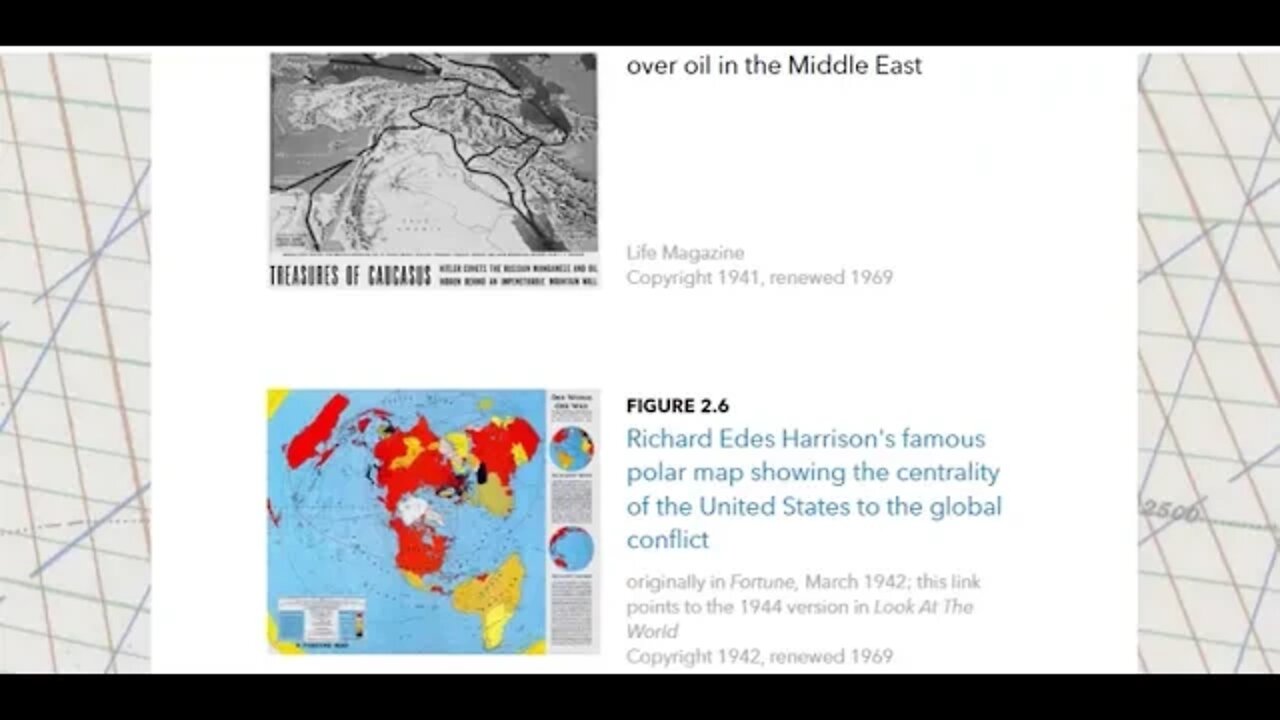Premium Only Content

After the Map: Cartography, Navigation...
After the Map: Cartography, Navigation, and the Transformation of Territory in the Twentieth Century
William Rankin http://afterthemap.info/about.html.
http://radicalcartography.net.
https://www.goodreads.com/book/show/26153718-after-the-map.
In the early twentieth century, cartographers and journalists predicted the dawn of a “map-minded age” where state-of-the-art maps would become everyday tools, and during the two World Wars newspapers gushed at the many millions of maps produced for the battlefield. But a few decades later maps barely made the news at all, and headlines instead focused on the rise of new electronic navigation technologies and the “revolution” promised by ubiquitous GPS receivers. How should we understand this radical shift in geographic knowledge, from the god’s-eye view of the map to the embedded experience of GPS?
Technologies like GPS have certainly not rendered maps obsolete; if anything, we are more “map-minded” than ever before. But maps clearly do not enjoy the authority they once did, and older concerns with geographic truth and objectivity have been upstaged by a new emphasis on simplicity, reliability, and everyday convenience. International collaborations between scientists have likewise been overshadowed by wartime mobilization and the global reach of the US military. Overall, managing space using GPS rather than maps alone has transformed the meaning of territory and the status of geographic boundaries – not just the boundaries between countries, but even the boundary between land and water.
As a result, it no longer makes sense to regard territory as simply a well-bounded block of geographic space. This is the territory produced by maps. New forms of geographic knowledge have instead created new ways of being territorial. This new territoriality emphasizes points instead of large continuous areas, and pointillist territories can overlap and shift for each different task. Even at the human scale of cell phones and driving directions, the goal is to navigate a constellation of coordinates, not to contemplate a bird’s-eye view of the world.
After the Map explores these changes by telling the story of three major international projects, each of which, in its own time, attempted to organize all geographic knowledge. Together the three projects span the three major branches of the mapping sciences: cartography, geodesy, and navigation.
The first is the International Map of the World, a hugely ambitious scheme for all countries of the world to collaborate on a uniform atlas of unprecedented detail. It was first proposed in 1891 and its standards were given the force of international treaty in 1909. By the time the project ended in the 1980s, thousands of maps had been produced.
The second is the Universal Transverse Mercator system, a grid-based alternative to latitude and longitude created by the US Army in the late 1940s. This system gives every point on the earth a remarkably user-friendly coordinate that can be used for everything from archeology to nuclear-missile targeting. It is arguably one of the most successful cartographic technologies of the twentieth century.
Finally, the third project is GPS – the Global Positioning System. The first radionavigation technologies were created as early as the 1910s, and a huge number of systems were created during and after World War II. The design of GPS began in the 1970s, and it was only at the turn of the twenty-first century that it became the dominant system we know today.
This book can be read at two scales. Narrowly, it is a history of the mapping sciences in the twentieth century that situates technologies like GPS within a longer trajectory of spatial knowledge. But more expansively, by connecting geographic knowledge to territorial politics and new ways of navigating the world, it is also a political and cultural history of geographic space itself.
#AftertheMap #Cartography #Navigation #Map #radical
-
 1:45:48
1:45:48
Glenn Greenwald
11 hours agoGlenn Reacts to News of the Week; Plus: Audience Q&A | SYSTEM UPDATE #443
100K76 -
 11:05:38
11:05:38
Dr Disrespect
16 hours ago🔴LIVE - DR DISRESPECT - PUBG - 5 CHICKEN DINNERS CHALLENGE
206K20 -
 3:23:12
3:23:12
I_Came_With_Fire_Podcast
15 hours agoSHALL NOT BE INFRINGED| THE TYRANNY OF UNELECTED BUREAUCRATS | XI BOWS
36.9K9 -
 4:19:36
4:19:36
SynthTrax & DJ Cheezus Livestreams
17 hours agoFriday Night Synthwave 80s 90s Electronica and more DJ MIX Livestream THE GREAT EDO WARS OF 2067 Edition
65.3K9 -
 4:45:15
4:45:15
RalliedLIVE
7 hours ago $1.60 earnedWarzone Domination w/ Ral
47.1K -
 1:10:17
1:10:17
Sarah Westall
9 hours agoWorld Leaders Increasingly Display Panic Behavior as Economic Change Accelerates w/ Andy Schectman
72.7K15 -
 59:54
59:54
Motherland Casino
6 hours ago $1.55 earnedScar x Ayanna
27.9K5 -
 41:57
41:57
BonginoReport
11 hours agoProtecting Kids From WOKE Ideology in School (Ep. 35) - Nightly Scroll with Hayley Caronia -04/25/25
118K50 -
 LIVE
LIVE
SpartakusLIVE
9 hours agoFriday Night HYPE w/ #1 All-American Solo NUKE Hero
141 watching -
 1:15:07
1:15:07
Kim Iversen
1 day agoThe Left Is Dead — What And Who Will Rise From the Ashes?
103K80